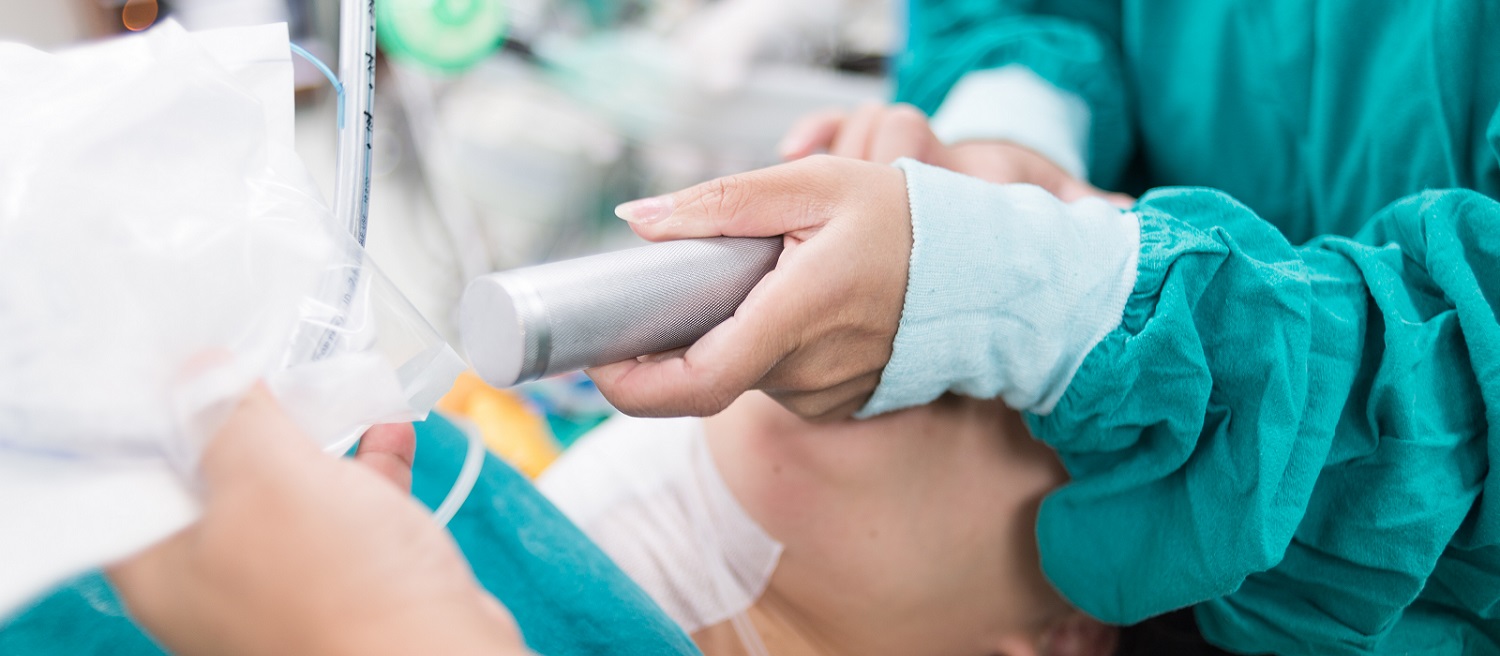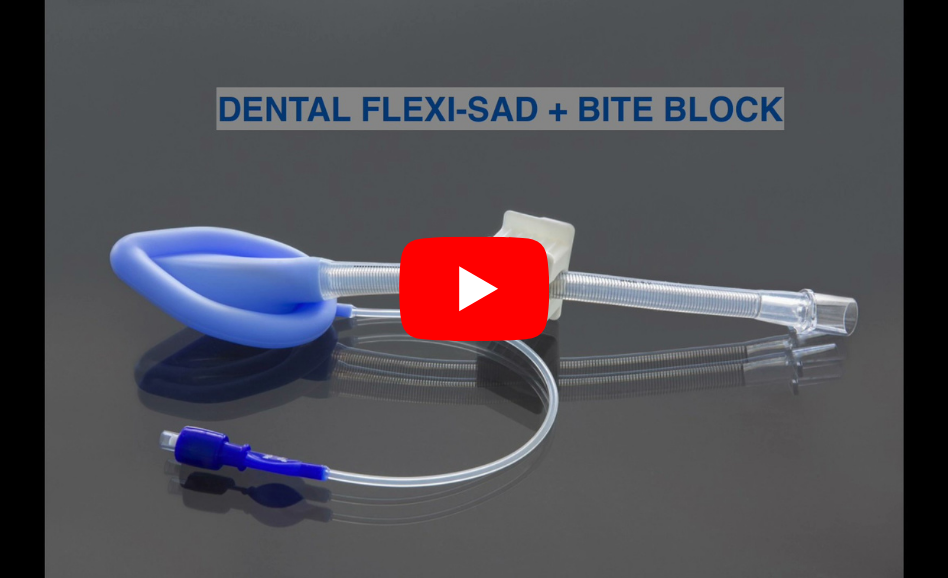
DENTAL FLEXI-SAD + bite block
Simple, safe and secure. Benefits the patient, oral surgeon and anaesthetist.
A flexible laryngeal mask airway is commonly used by the surgical team, offering several advantages in reducing the recovery time post anaesthesia for day surgery. The disadvantage is that the airway tube of the laryngeal mask airway obstructs the surgical field and may be liable to damage or dislocation by the surgical team. The Genesis Airway bite block when vertically placed between the molar teeth to achieve jaw opening has a channel in the medial surface that allows the airway tube to be clipped into the bite block. This removes the airway tube from the surgical field and stabilizes it preventing accidental dislocation. The airway tube may be easily clipped in and out of the bite block without dislocating the airway, allowing movement of the bite block to the opposite side of the jaw and giving surgical access to the entire surgical field.
After surgery has ended and the patient is emerging from anaesthesia the bite block may be clipped to the airway tube in a horizontal position preventing the patient biting down on and occluding the airway tube. The Genesis bite block is single-use, minimising infection risks from re-sterilisation.




